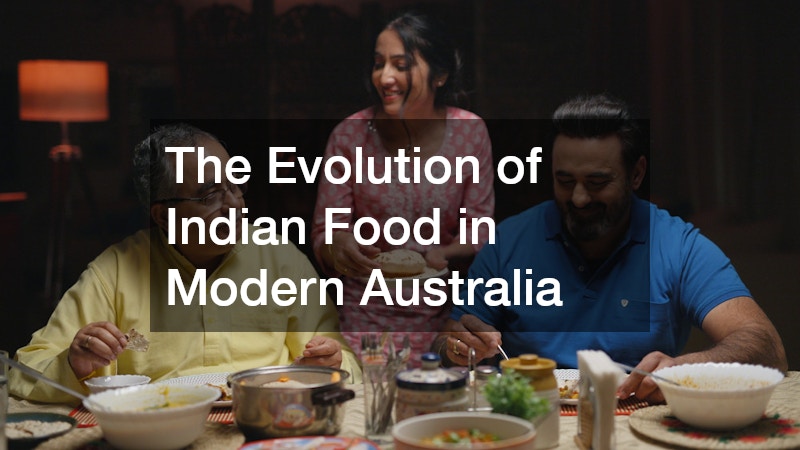In Australia’s diverse culinary landscape, few cuisines have undergone as fascinating a transformation as Indian food. Once confined to a handful of traditional dishes served in family-run restaurants, Indian cuisine is now celebrated in bustling food halls, gourmet dining rooms and home kitchens alike.
The journey of Indian cuisine in modern Australia reflects not only changing palates but also the cultural integration and innovation that characterise contemporary Australian society.
A History of Flavour
Indian dishes first arrived on Australian shores alongside Indian migrants in the late 19th and early 20th centuries, particularly in Queensland and New South Wales. Early Indian migrants brought with them treasured recipes and spice blends, often preparing meals within their communities rather than in commercial settings. However, it wasn’t until the post-war migration boom and the dismantling of the White Australia Policy that the broader Australian public began to experience Indian flavours more widely.
The 1970s and 1980s saw a rise in Indian restaurants, primarily serving northern Indian cuisine, which was more familiar to Western tastes. Dishes like butter chicken, rogan josh and naan became mainstays on Australian menus, albeit often adapted with milder spices and local ingredients. This period marked the beginning of Indian cuisine becoming a recognisable, if still limited, part of Australia’s multicultural diet.
Regional Diversity on the Rise
In recent decades, there has been a growing appetite for authenticity and regional diversity in Indian dishes. Chefs and restaurateurs have responded by showcasing dishes from southern, eastern and western India, expanding beyond the traditional curry-house staples. Diners now enjoy everything from Goan fish curry and Hyderabadi biryani to Tamil dosas and Bengali sweets.
This shift reflects a broader trend among Australians seeking new food experiences and a deeper understanding of the cultures behind them. Markets now stock a wider range of Indian spices and ingredients, while regional Indian cookbooks and YouTube channels enjoy growing popularity. The expanding diaspora has also led to a surge in local businesses offering homemade meals, tiffin services and street-style Indian snacks, further enriching the culinary fabric of urban and suburban Australia.
Fusion & Innovation
While authenticity has gained traction, fusion has played a significant role in bringing Indian cuisine into the mainstream. Australia’s open, experimental food culture has welcomed creative mashups such as butter chicken pies, tikka tacos and masala burgers. Indian flavours are now featured in unexpected places—from brunch menus to cocktail lists—blending seamlessly with local produce and Western formats.
Innovative chefs are also using native Australian ingredients to put a new twist on Indian dishes. Think kangaroo vindaloo, wattleseed naan or curries infused with lemon myrtle. These cross-cultural creations not only celebrate Australia’s unique food environment but also reflect a modern sensibility that values both tradition and reinvention.
This evolution is not limited to fine dining. Food trucks, pop-up markets and delivery platforms have made Indian cuisine more accessible than ever. Whether it’s a quick samosa on the go or a sophisticated multi-course experience, Indian cuisine continues to meet Australians wherever they are.
Home Kitchens & Everyday Dining
Perhaps the most telling sign of Indian food’s integration into modern Australian life is its presence in everyday cooking. Many Australians now regularly prepare Indian-inspired meals at home, with supermarket aisles stocked with curry pastes, spice mixes and frozen Indian meals. Cooking shows and social media influencers have helped demystify traditional recipes, making them approachable for novice cooks.
The increasing familiarity with Indian dishes has also led to more nuanced palates. Diners now distinguish between garam masala and chaat masala or between a korma and a vindaloo. This growing culinary literacy reflects a broader respect for the complexity and variety of Indian cuisine.
A Shared Culinary Future

The evolution of Indian cuisine in modern Australia is a story of adaptation, resilience and shared appreciation. It mirrors the broader journey of multiculturalism in Australia, where cultural traditions are not only preserved but also transformed through dialogue, openness and creativity.
As second- and third-generation Indian Australians take the helm in kitchens and food businesses, they bring fresh perspectives and hybrid identities that continue to redefine what Indian dishes mean today. Their contributions ensure that Indian cuisine remains dynamic, relevant and deeply rooted in both heritage and innovation.
With Australia’s food scene constantly evolving, the future of Indian dishes looks bright. It will likely continue to blend authenticity with experimentation, tradition with trend and spice with sustainability. Whether in a Michelin-listed venue or a suburban food court, Indian cuisine has become an essential flavour in the story of modern Australian dining.
From its humble beginnings to its current status as a staple in Australian homes and restaurants, Indian food has come a long way. And as Australians continue to embrace bold flavours, cultural exchange and culinary diversity, it’s clear that the journey is far from over.
